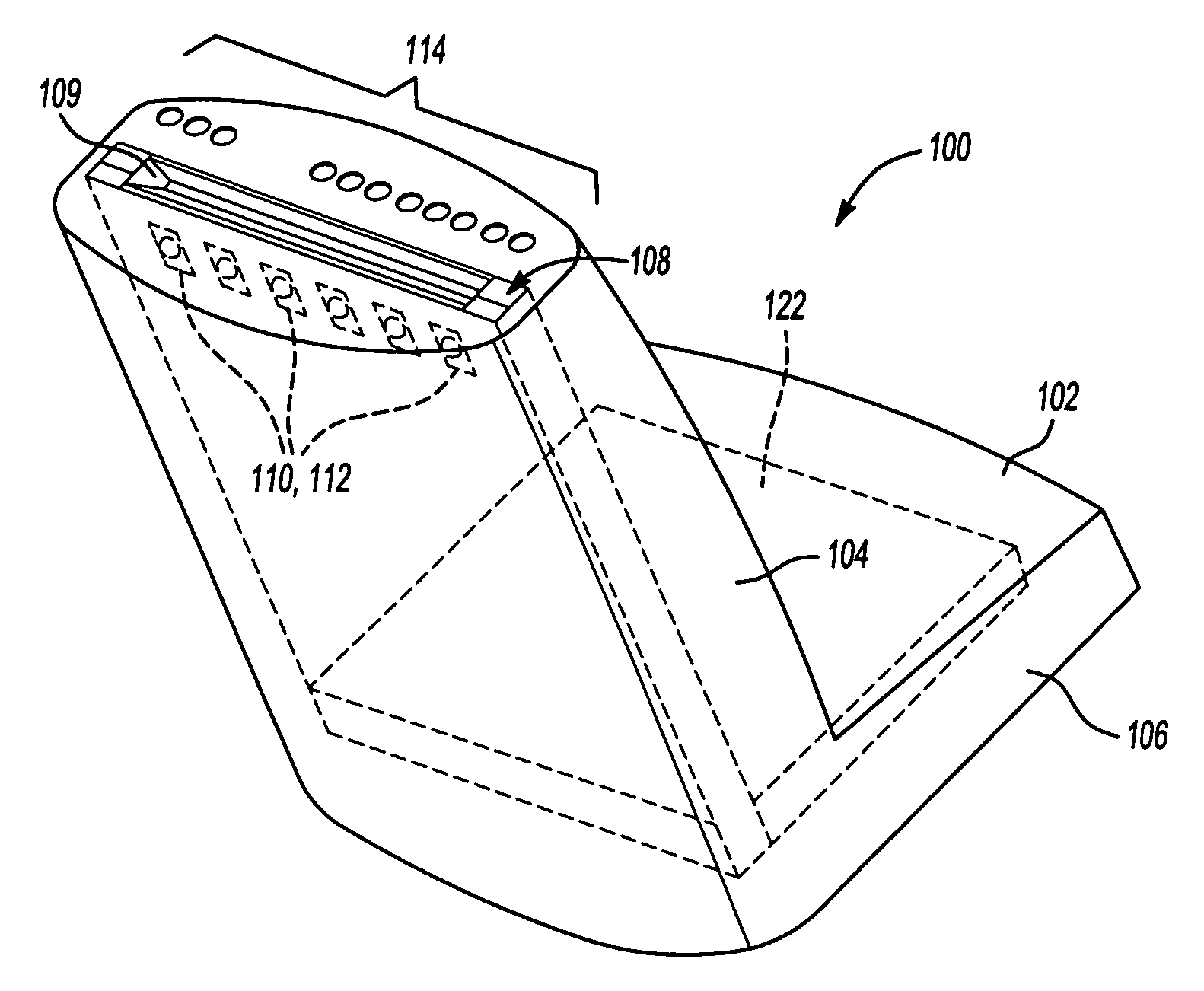Electronic card encoder
a technology of encoders and encoders, applied in the field of encoders of electronic cards, can solve the problems of increasing the complexity of the structure, unable to erase and re-encode cards, and common user errors, so as to reduce the likelihood of encoding errors, reliably encode key cards, and keep the encoder structure compact and inexpensive
- Summary
- Abstract
- Description
- Claims
- Application Information
AI Technical Summary
Benefits of technology
Problems solved by technology
Method used
Image
Examples
Embodiment Construction
[0018]FIGS. 1 through 3 illustrate a key encoder 100 according to one embodiment of the invention as seen from the outside of the encoder 100. Referring to FIG. 1, the encoder 100 includes a generally L-shaped housing 102 with a card insertion portion 104 and a base portion 106. In one embodiment, the angle between the card insertion portion 104 and the base portion 106 is around 100 degrees (i.e., 10 degrees off from perpendicular). The angled housing, in conjunction with the compact configuration of the encoder's inner components (described in greater detail below) minimizes the amount of desk space that the key encoder 100 occupies.
[0019]FIG. 2 is a representative top plan view of the key encoder 100 of FIG. 1 to show the card insertion portion 104 in more detail. The card insertion portion 104 includes a slot portion 108 having a slot 109 that accommodates a standard key card. The slot 109 preferably is slightly larger than the key card so that the card can be inserted easily i...
PUM
 Login to View More
Login to View More Abstract
Description
Claims
Application Information
 Login to View More
Login to View More - R&D
- Intellectual Property
- Life Sciences
- Materials
- Tech Scout
- Unparalleled Data Quality
- Higher Quality Content
- 60% Fewer Hallucinations
Browse by: Latest US Patents, China's latest patents, Technical Efficacy Thesaurus, Application Domain, Technology Topic, Popular Technical Reports.
© 2025 PatSnap. All rights reserved.Legal|Privacy policy|Modern Slavery Act Transparency Statement|Sitemap|About US| Contact US: help@patsnap.com



